MACRO OCTOBER IN MARLERA - Episode Seven - ON THE TWELFTH OF OCTOBER
The October days are still warm and the nature around me is teeming with life. Although the calendar wouldn't agree, the winter still feels far away. I spent a couple of hours in Marlera today as well, but that's a story for one of the future posts of this series. Today, I'm gonna show you what I found and photographed ten days ago, on the 12th of October 2023.
Before continuing, I would like to say a few words that explain the word Marlera in the title. Marlera is the name of a coastal area a couple of kilometers from the village of Liznjan and about five or six kilometers from where I live. And now, let's start the insect mania.
This thing looked like a dry fragment of some plant that somehow ended up on a leaf of fresh green grass. Only when I came closer ...
... and took a look through the macro lens, I recognized a well-camouflaged moth.
Today, while preparing this post, I found out on the Internet that the name of the species is Dichomeris acuminatus. This moth belongs to the Gelechiidae family. It's a widespread species that can be found practically all around the world in tropical and sub-tropical habitats. The larvae feed on a wide variety of plants that can be found in different parts of the world. Here where I live, the host plants are probably some Medicago species.
I found some interesting leafhoppers on the 12th of October.
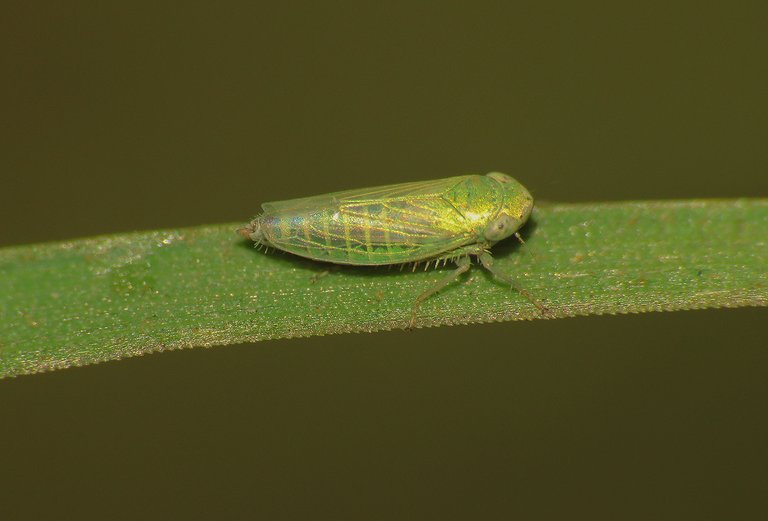
Photographing this partially iridescent one was the most exciting macro experience of that warm October afternoon.
First - because I've never seen this kind of leafhopper before ...

... and second - because I get easily mesmerized by iridescence no matter the form in which appears in nature. The name of this species from the Cicadellidae family is Aconurella prolixa. Nymphs and adults feed on various grasses from the Poaceae family.
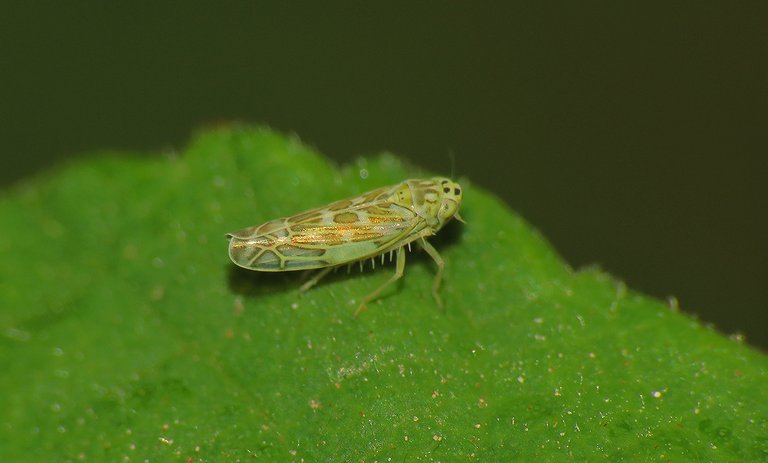
This is the Eupteryx melissae, a Cicadellidae species that already appeared in this series. In the following photograph ...
... you can take a break from the macro view by watching the meadow at sunset.
Hemipteran insects from the Delphacidae family are commonly known as planthoppers. They are fairly closely related to the leafhoppers. In this and the following photograph ...
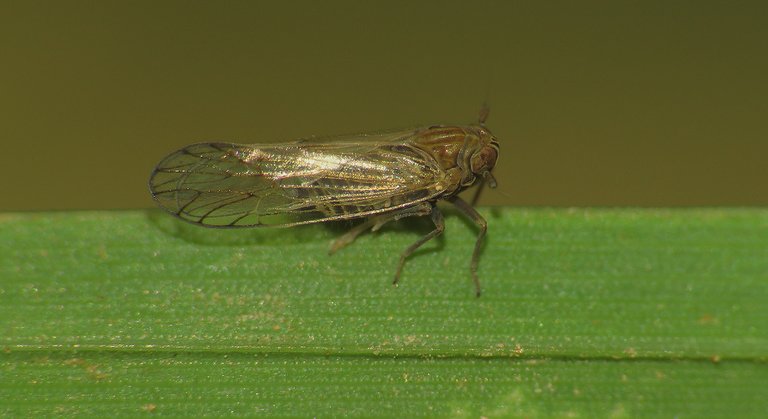
... you can see the Toya propinqua, a species from the Delphacidae family. A male with long, well-developed wings, more precisely.
This is the brachypterous female of the same species.

Brachypterous is a term used to describe an animal with short or reduced wings.
Not only do the insects and other small arthropods look cool because they come in all kinds of shapes & colors, but there is also plenty of cool stuff one can find out about their biology and lifestyle. Macro is the closest thing to exploring a fantasy world here on Earth and in the most mundane reality.
Here you can take another quick break from the macro view. The photograph shows a chunk of the scenery with a group of Erigeron bonariensis plants in the foreground. In the following shot ...
... the same plants are shown from a different angle.
Here you can see two lovely little beetles mating on the leaf of some herbaceous plant I wasn't able to identify because I forgot to photograph the entire leaf or the entire plant.
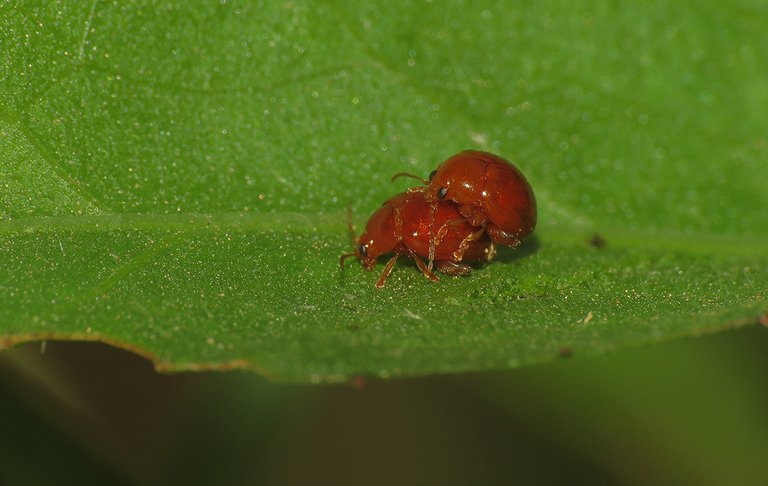
These are leaf beetles. Which means they belong to the Chrysomelidae family.
The name of the species is Sphaeroderma testaceum. Both larvae and adults feed on leaves, especially leaves that belong to various Thistle species. In the following photograph ...
... you can see a mating pair of a very different kind.
Pezotettix giornae is a species that appears fairly regularly in this series. These grasshoppers are very common and numerous here where I live.
As in quite a few other grasshoppers from the Acrididae family ...
... the color and the markings can be more or less different from individual to individual.
You'll certainly notice small differences if you compare all the Pezotettix giornae shown in today's post.
This beautiful caterpillar is the larval form of the Papilio machaon, a pretty big butterfly commonly known as the Old World swallowtail. It was photographed on the Foeniculum vulgare plant on which this species often feeds at this stage of life.
This slightly younger and smaller caterpillar of the same species has also a slightly different appearance.
In this last photograph, you can take a look at the Dactylis glomerata grass at dusk.
AND THAT'S IT. AS ALWAYS HERE ON HIVE, THE PHOTOGRAPHS ARE MY WORK - THE END.
The following links will take you to the sites with more information about some of the protagonists of this post. I found some stuff about them there.
https://bladmineerders.nl/parasites/animalia/arthropoda/insecta/lepidoptera/ditrysia/gelechioidea/gelechiidae/dichomeridinae/dichomeris/dichomeris-acuminatus/
https://www.truehopperswp.com/species/aconurella-prolixa
https://truehopperswp.com/species/toya-propinqua
https://en.wikipedia.org/wiki/Sphaeroderma_testaceum
https://en.wikipedia.org/wiki/Pezotettix_giornae
https://en.wikipedia.org/wiki/Papilio_machaon
https://en.wikipedia.org/wiki/Dactylis_glomerata

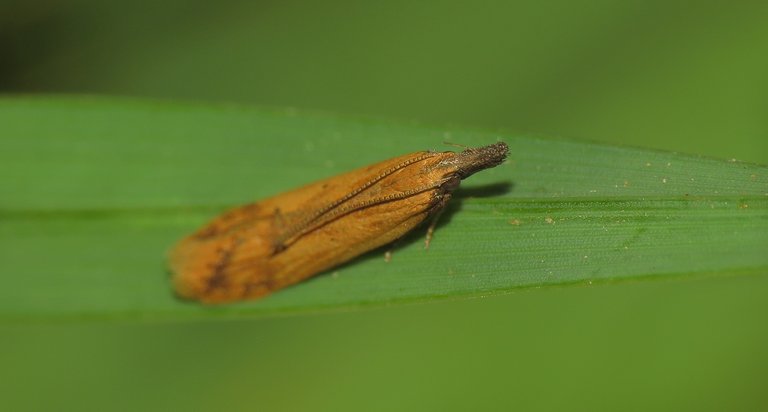
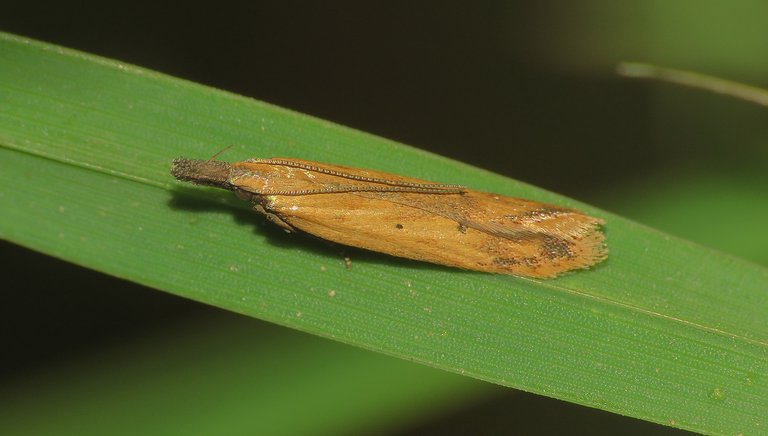

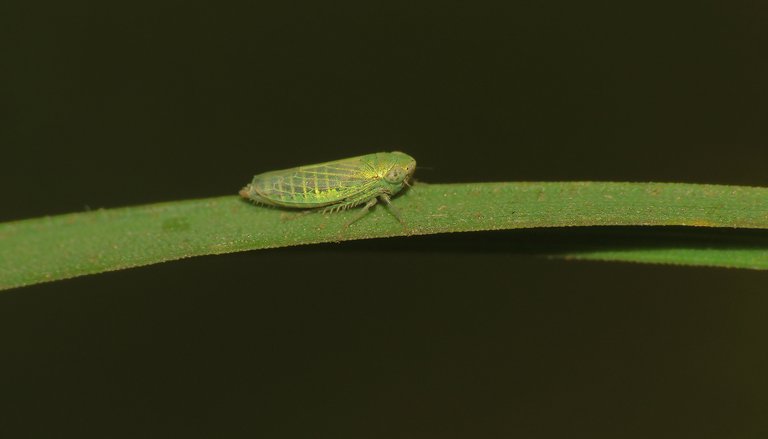

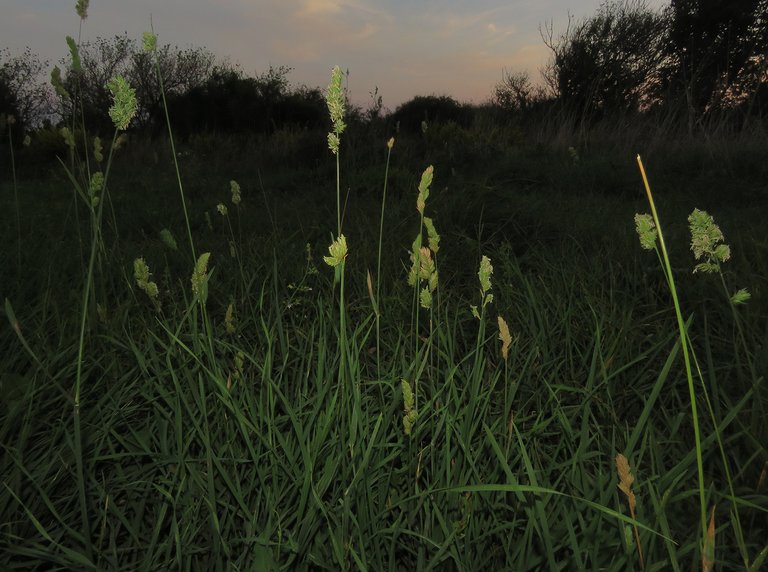
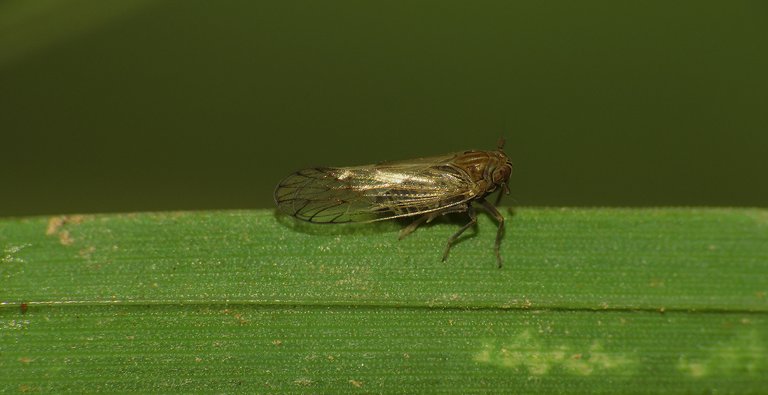



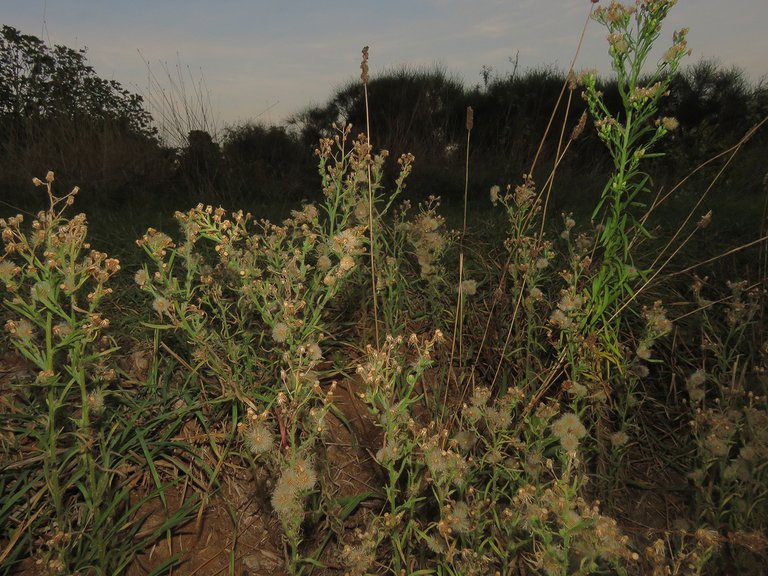


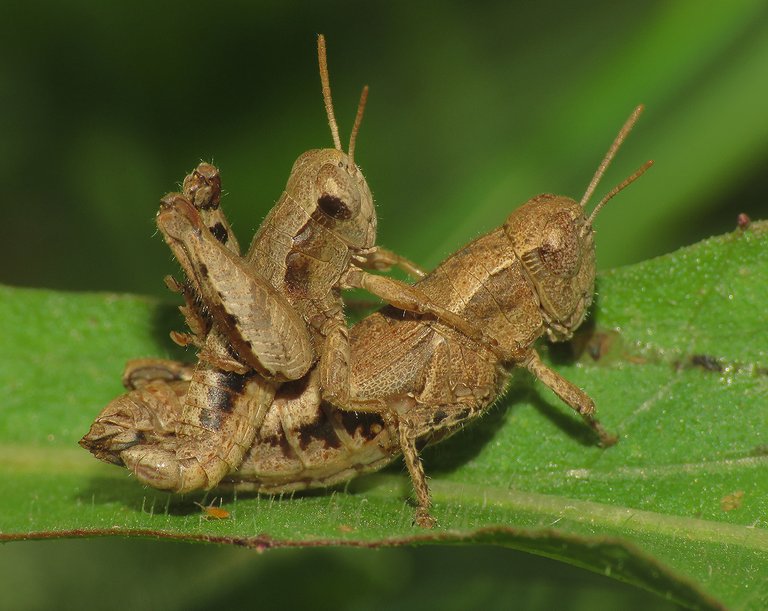
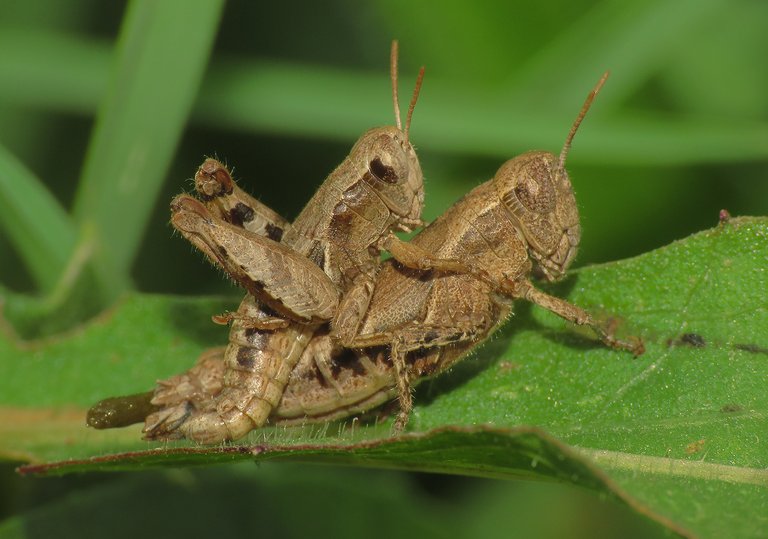
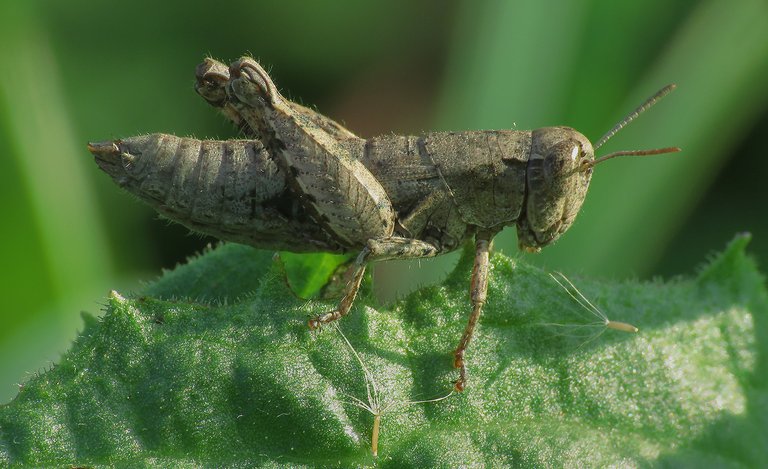


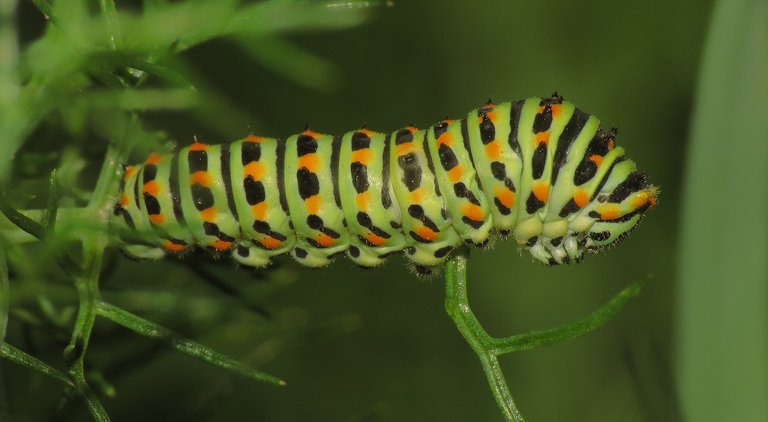

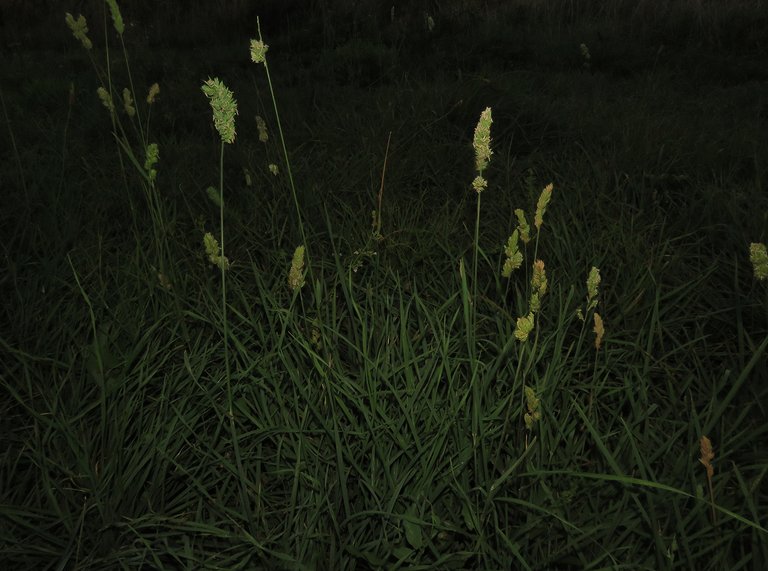
Oh, what beautiful photos, and the future seems assured!
😃 Yes, October will be filled with stories like this one right till the end.
All the photos were dope as usual. My favourite was definitely that awesome looking caterpillar. I just did an internet search for the 'Papilio machaon', and wow - what an incredible looking butterfly! Like, I mean really! Where to even begin. Speechless. Eat up little catepillar.. you have an incredible transformation later on my little friend!
Yes, those swallowtails are beautiful ... and their caterpillars are colorful too. 😃 There is plenty of colorful little stuff out there.
True that my friend!
The pictures really turns out to be so amazing
You are welcome
The insects that you managed to photograph are really very beautiful
Wow, the left hopper looks cute by the way.
Some insects are beautiful and you did a nice job with the photographs.
Yes 😃 some insects have surprisingly cute faces when seen through the macro lens.
I learn always something new from your post. Thanks for sharing.
Thank you. 🙂 Glad you like the post and find it informative.
Buen día ,@borjan cada día encuentras 🐝🦋 insectos más interesantes y extraños , admirable, la polilla casi es indetectable y el saltahojas esta bastante raro
@tipu curate 🌻
Upvoted 👌 (Mana: 53/63) Liquid rewards.
Man this post is like a National Geographic show! Amazing what you can see if you look a little closer and how fantastic it is you can share it across the world instantly here.
Until this week, winter has seemed far away too. This morning, we have frost showing us it can change very quickly!
😃 The frost besides being cool in more than one sense, also offers some beautiful macro details. The frost season here is extremely short, about one week a year, but only thirty or forty kilometers inland the frost is more persistent and a bit of snow can fall for a couple of days.
We'll see how the autumn will look here this year. For now, the forecast for October is "summer until the end" Maybe November will change things.
I have noticed that even in my garden some insects are so well camouflaged (especially moths and leaf-hoppers, as seen in your photos above). As humans, we miss so much detail, just by not looking closely at what Nature gives us ... !LOL
Your photos are an inspiration to us all, for what can be found with a Macro lens. Awesome post as always Borjan! 👏
Have a great day, and STAY !ALIVE 👌 !VSC
@fun.farms has sent VSC to @borjan
This post was rewarded with 0.1 VSC to support your work.
Join our photography communityVisual Shots
Check here to view or trade VSC Tokens
Be part of our Curation Trail
@fun.farms ha enviado VSC a @borjan
Éste post fue recompensado con 0.1 VSC para apoyar tu trabajo.
Únete a nuestra comunidad de fotografía Visual Shots
Consulte aquí para ver o intercambiar VSC Tokens
Se parte de nuestro Trail de Curación
@borjan! You Are Alive so I just staked 0.1 $ALIVE to your account on behalf of @ fun.farms. (1/10)
The tip has been paid for by the We Are Alive Tribe through the earnings on @alive.chat, feel free to swing by our daily chat any time you want, plus you can win Hive Power (2x 50 HP) and Alive Power (2x 500 AP) delegations (4 weeks), and Ecency Points (4x 50 EP), in our chat every day.

lolztoken.com
We're a cover band.
Credit: reddit
@borjan, I sent you an $LOLZ on behalf of fun.farms
(1/10)
Farm LOLZ tokens when you Delegate Hive or Hive Tokens.
Click to delegate: 10 - 20 - 50 - 100 HP
https://twitter.com/lee19389/status/1716453545136820586
#hive #posh
Welcome
I think k you are getting more interested in taking pictures of animals these days and you know them so well
I love that!
Yes, these days are like the second spring. It's not too warm like in summer or too cold like in winter. Ideal time to explore nature.
Congratulations, your post has been upvoted by @dsc-r2cornell, which is the curating account for @R2cornell's Discord Community.
https://twitter.com/LovingGirlHive/status/1716467305251844571
Congratulations @borjan! You have completed the following achievement on the Hive blockchain And have been rewarded with New badge(s)
Your next target is to reach 9000 comments.
You can view your badges on your board and compare yourself to others in the Ranking
If you no longer want to receive notifications, reply to this comment with the word
STOPTo support your work, I also upvoted your post!
OH you captured them mating? :P Hopefully it didn't disturb their privacy ;) :P Wonderful photography as always.
😀😂😀

:p
The photos are beautiful and informative, and I appreciate you sharing your knowledge about the different species.
I was particularly interested in the Dichomeris acuminatus moth, which you described as being well-camouflaged. It is amazing how some insects have evolved to blend in with their surroundings, making it difficult for predators to see them.
The Aconurella prolixa leafhopper was also stunning, with its iridescent wings. I have never seen a leafhopper like that before.
I also enjoyed the photos of the Pezotettix giornae grasshoppers and the Papilio machaon caterpillars. It is always interesting to see the different life stages of insects.
Yes, insects have evolved in an amazing variety of shapes and colors to blend into their surroundings or to mimic other species. Their biology is very interesting but also purely from an aesthetic perspective, the insects look amazing and therefore are a joy to photograph. I never studied anything biology-related, I studied visual arts, so I was attracted purely by the amazing shapes and colors at first. Now, while making these posts, I learn a bit of biology along the way.
I am always learning from you, most insects you always share are new to me but with your help, I am learning. Thank you 😊 The photos are beautiful as always
Thank you. 🙂 Glad you like the post and find it informative.
https://twitter.com/jewellery_all/status/1716588760786469263
Thank you. Glad you like this macro stuff.
Beautiful, and the clarity is topnotch.
!LUV
I love that you capture the iridescence on the insects. That's often what I comment on. The Eupteryx melissae should be named leopard hopper. :)) I loved the delicate outlining of the wings on the Toya propinqua. Nice post!
🙂 Yes, the colors and markings on that one make him a tiny leopard. 😀 Glad to know that you are also a fan of iridescence.
I really do! Love looking through your posts as I find them. :))
🙂